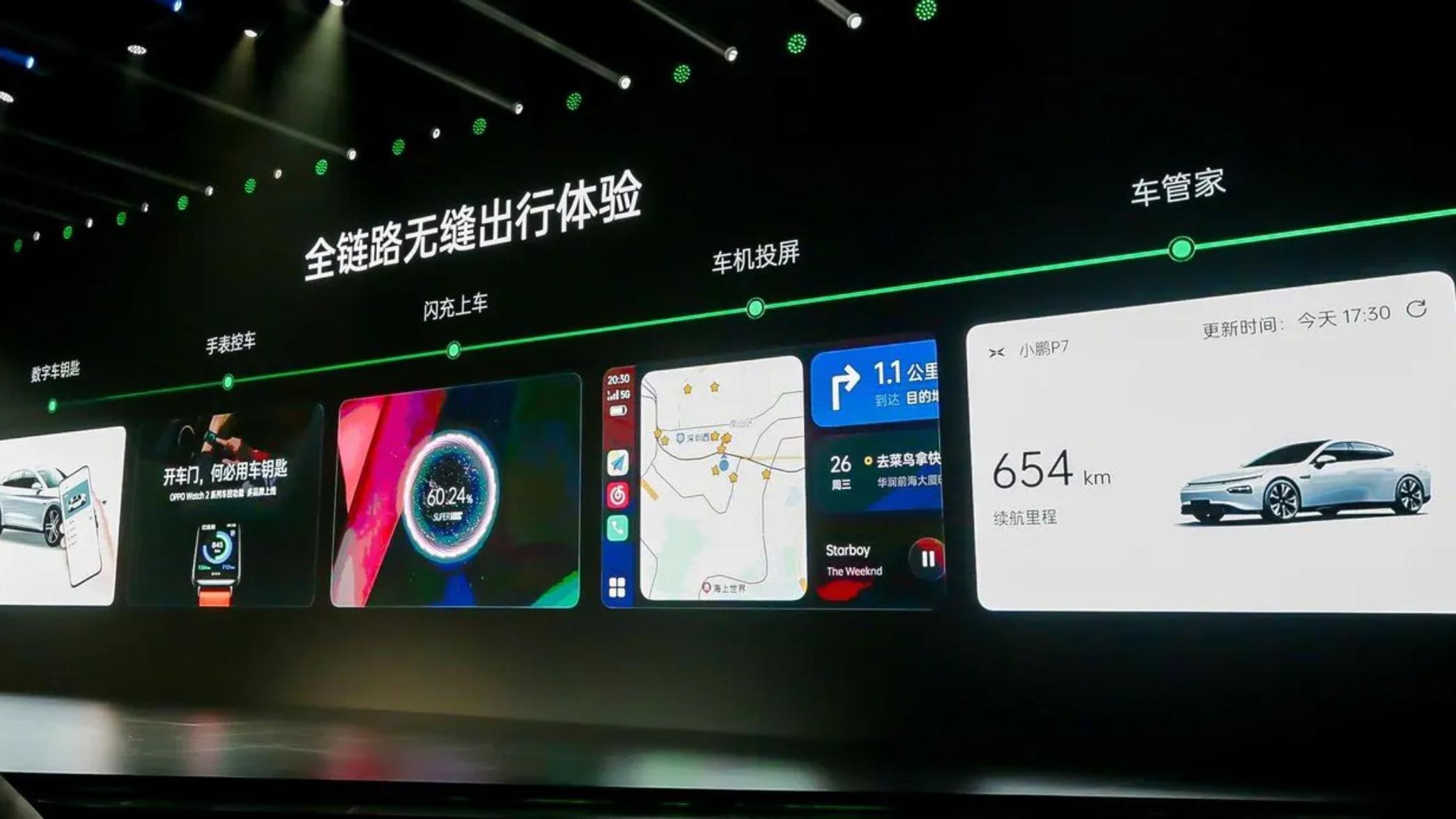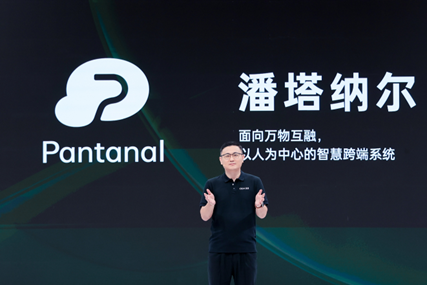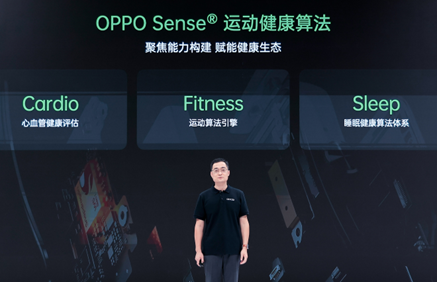How does the 18 -year -old OPPO storage an ecosystem go to the future in uncertainty?
Author:Economic Observer Time:2022.09.17

Under the wave of 5G and IoT, technical services are changing the operating model of the smartphone industry and even the entire world in an unprecedented way. With the surge in intelligent devices and the development of new technologies such as artificial intelligence, the process of interaction between all things has accelerated, and more consumer -centric new models and new experiences are born, and cross -end integration has become a trend.
According to GSMA forecasts, the number of global IoT terminal connections in 2025 will reach 25 billion, of which the number of consumer IoT terminal connections will reach 11 billion, and trillions of new equipment will be connected to the network and generate massive data. Data from iResearch show that by 2032, the number of equipment per capita will reach 12 units.
New applications will bring innovation to the terminal. Only those companies that fully excavate and meet consumer needs at the product application level will have the opportunity to maintain a lead.
At the same time, in 2022, China's smartphone industry is at a difficult moment. On the one hand, the slowdown in the growth of the domestic smartphone market has become a foregone conclusion. According to data from the China Institute of China, from January to July 2022, the total domestic shipments in China had a total of 156 million, a year-on-year decrease of 23.0%. In July, the domestic market's mobile phone shipments were 19.908 million units, a year -on -year decrease of 30.6%. On the other hand, overseas markets, especially Indian markets, have shrunk due to political factors.
Facing the challenge, Chinese smartphone manufacturers must solve several things. The first is the sustainability of business development, and the second is the new growth point. These strategies do not sound novel, but it is related to the re -integration of the value chain and the reshaping of the ecosystem.
Reshape the core competitiveness
On September 16, 2002, the 18th anniversary of OPPO was established. Starting the most comprehensive and meticulous "upgrade" since entering the smartphone industry 18 years ago, it may be the best way to celebrate OPPO.
Two weeks ago, the company released its new generation of ColorOS 13 operating system and the "Pattanal" middleware platform at the 2022 OPPO Developer Conference (ODC22). The former is OPPO's self -developed system -level computing center. Relying on computing power models and parallel computing engines, it mainly solves high performance and low power balance; and the problem of smooth operation under multi -tasking. The latter is named after the world's largest wetland "Pantanal", which means that OPPO hopes to use the openness and friendliness of the self -developed software system to achieve the connection and collaboration of multiple devices, systems, services and OPPO devices.

This is not only part of the R & D strategy since 2019, but also the beginning of OPPO's transformation from smartphone manufacturers to technology companies. In the words of OPPO founder Chen Mingyong, "Although smartphones are the most well -known products of OPPO, they are actually just one of the carriers of our users."
He announced that since 2019, he has invested 50 billion R & D budgets in the next three years, and is committed to building the core hardware core technology and software engineering and system capabilities.
At the Future Science and Technology Conference in 2020, OPPO proposed the scientific and technological transition strategy of "3+N+X". Among them, "3" refers to the three major fields of hardware, software and service basic technology; "N" refers to the brand. Several capacity centers that have been constructed for a long time include artificial intelligence (AI), security privacy, etc.; "X" refers to the differentiated technologies of the brand, including products and functions such as images.
In OPPO CEO Chen Mingyong's plan, "OPPO is not just a mobile phone company, but will build a multi -imported intelligent terminal ecosystem in the era of mutual integration." In addition to the infrastructure of the "Mariana" chip, OPPO hopes Through the "Pantanal Plan" involving software engineering and supporting global developers, and the "Amazon Program" for building cloud services, structural underlying scientific and technological innovation, and finally promoted the realization of the "mutual integration of all things" ecosystems.
According to the plan, Pandanal 1.0 will be launched in 2023 on the COLOROS 13.1 and 14 versions. By perceiving to users, drive Duanyun's collaboration computing, break the differences and restrictions between equipment and systems, and truly connect different devices. For example: where people went where the device was taken before, as long as there is an OPPO account, they can be edited at any time on multiple devices.
It is understood that the "Pantanal" plan started from the six groups of 6 people three years ago. At present, the R & D team has nearly a thousand people. The budget for approval by technology research and development is 200 million yuan each year. But these are not all invested in the layout of the software platform. As of August 2022, OPPO has built 15 joint laboratories related to the international first -class R & D level to conduct innovative research in key technology areas.
OPPO hopes that in the 5G era, through the fusion of technologies such as AI, AR, cloud computing, play a more important role in new entrances, new scenes, and new services.
Expansion capabilities
On the one hand, the competition in the smartphone industry will be more and more focused on the application experience. The mobile phone industry must face not only the development issue, but also the reinvention of the core competitiveness. On the other hand, more new areas are unprecedented opportunities, and the changes brought about by artificial intelligence and the Internet of Things. Smart mobile phone manufacturers who are innovative at the frontier of innovation need to continue to challenge the boundaries of innovation and cooperation.
At present, OPPO has in -depth cooperation with brands such as Hisense and Midea. At the same time, TSMC Group SAIC Group, the largest vehicle company in China to accelerate the "ecological field" layout of mutual integration of vehicles. In terms of the two major industries of mobile phones and automobiles, OPPO launched a system solution for interoperability of vehicles -OPPO Carlink, and announced the establishment of a joint laboratory with SAIC Group and SAIC Zero. The Galaxy full stack architecture realizes the seamless fusion of the automotive and mobile phone system. As OPPO cooperates in depth with SAIC, in the future, Pantanal can be realized. Entering the car, the navigation of users on the mobile phone can be automatically transferred to the car screen to display. At the same time Switch traditional navigation into a new AR navigation, the real pavement combining virtual and reality makes the navigation experience easier and smarter.
While working together to better serve users, Pantanal also provides developers with the ability to serve UI templates, show contact, information elastic grading, and cross -platform execution. On the mobile phone, there are different sizes and a variety of forms that carry the fast -prolonged cards that carry Pantanal services. In the future, these service cards can also cover many types of terminals such as tablet computers, PCs, Bluetooth smart watches, smart cockpits, and can be dependent on. Terminal setting different forms push.
In fact, mobile phone manufacturers are closest to users throughout the industry chain. It is the natural mission of mobile phone manufacturers to help developers with a better experience. In OPPO's platform incentive policy "Gravity Plan", OPPO plans to provide a total value of 2 billion resources by 2023 to continue to promote the ecological construction of partners. Make the current platform open capacity covering multiple fields such as application services, graphics processing, interconnection, and other fields.
At present, more than one million developers and creators have joined the OPPO ecosystem. OPPO has established cooperation with more than 40 internationally renowned institutions, more than 150 experts and scholars, and more than 40 consultants, adding more than 120 cooperation projects.
Taking the field of health as an example, in 2021, OPPO set up a health laboratory, which combined with experts in the fields of data science, health algorithms, hardware sensors, biomedical and other fields, and began to explore breakthroughs in health algorithms and hardware sensors, including health business and products provided Software and hardware and other technical support. At the end of August, the laboratory released the self -developed OPPO Sense® sports health algorithm for the first time, bringing the functional updates of multi -dimensional health scenarios such as cardiovascular, sports, and sleep for the OPPO Watch 3 series.

With the interweaving of business forms, the integration of soft and hardware products and services has become the basis for the future development of OPPO. OPPO is trying to solve the problem of terminal diversification and service diversification, "maximize, the lightest to make the connection experience better".
In fact, a more open and complete ecosystem is needed behind each application service. Taking the application of the cardiovascular field as an example, OPPO cooperates with the global blood pressure head brand Omron: including the negative one -screen Omron Health Assistant, and will also conduct direct IoT device in the future. Essence
Previously, OPPO conducted a research on high blood pressure lifestyle management with Fuwai Hospital of the Chinese Academy of Medical Sciences. In August this year, it officially joined the State Cardiovascular Disease Commission of Health Lifeline Medical Commission; cooperated with the Ministry of Medicine of Peking University Research.
For OPPO, only with more like -minded partners can we create a intellectual service ecosystem. This is a completely brand -new ecosystem and a brand new business cycle.
New products will be more diversified, rather than standardized, which means that many products need to make huge changes from design, research and development, production to after -sales service. The new ecosystem is being restructured. Whether it is a smart terminal company or a traditional service provider, it will connect with each other in the new technical form and environment.
- END -
Painted a civilized Haidian | Don't blink!There is a "Journey to the Universe" here waiting for you

[Zi Niu Toutiao] After the rain, the desert is shocked by the indifferent "sand fox's eyes". The photographer has recorded Damei Xinjiang for more than 20 years

Otherwise, the right to investigate legal responsibilityRecently, a video and pict...